Mastering the art of interview transcription is essential for capturing every nuance of your conversations. Start by listening to the entire recording for context. Estimate how much time you'll need based on length and your typing speed. Choose reliable tools like a good audio player and word processor. Write a draft without worrying about formatting, then edit for clarity. Use speaker labels and highlight key points for better understanding. Pay attention to the dynamics between interviewers and interviewees to enhance accuracy. Keep going, and you'll uncover more tips to elevate your transcription skills.
Key Takeaways
- Begin by thoroughly listening to the interview recording to grasp context and nuances before starting the transcription process.
- Use effective transcription tools, including audio players with hot-key functions and word processors, to streamline your workflow.
- Draft the transcript focusing on capturing content accurately, then proofread for clarity, formatting, and errors.
- Clearly label speakers, include date and location, and format dialogue for easy readability and understanding.
- Foster a balanced dialogue during interviews by being aware of power dynamics and encouraging thoughtful responses from participants.
Understanding Interview Transcripts
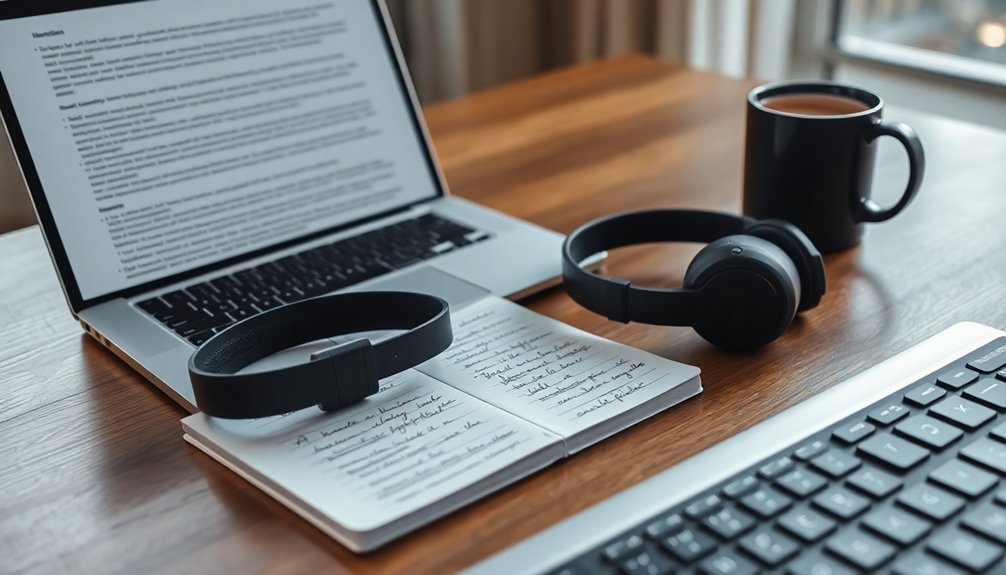
Recognizing the importance of accurate documentation, interview transcripts serve as essential records of oral interviews, capturing the nuances of conversations between participants.
When you create an interview transcript, you're not just jotting down words; you're preserving the context and subtleties that shape the dialogue. This written record allows you to reference specific details later, ensuring you don't miss critical insights.
It also streamlines collaboration among decision-makers, allowing them to access the same information without relying on memory. By focusing solely on the conversation, you can engage fully with interviewees, enhancing the quality of the interaction.
Steps for Effective Transcription
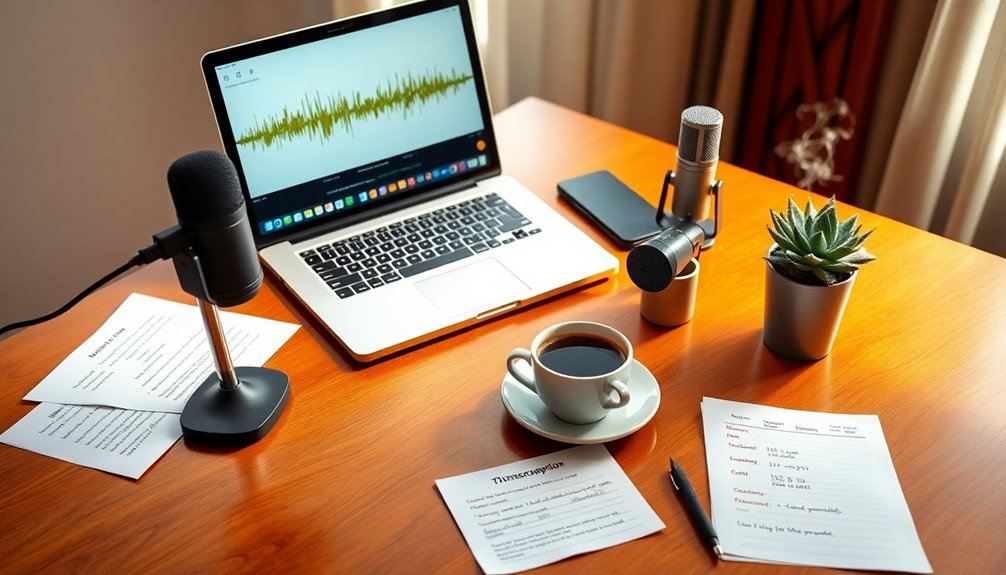
Transcribing interviews effectively involves a series of clear steps that guarantee accuracy and thoroughness. Start by listening to the full recording to grasp the context.
Next, estimate how much time you'll need based on the recording length and your typing speed. Choose your tools wisely, like an audio player and a word processor, to streamline the process.
Write a draft without worrying about formatting; just focus on capturing everything. After that, proofread your draft carefully to catch any errors and format the transcript for clarity.
Essential Transcription Tools
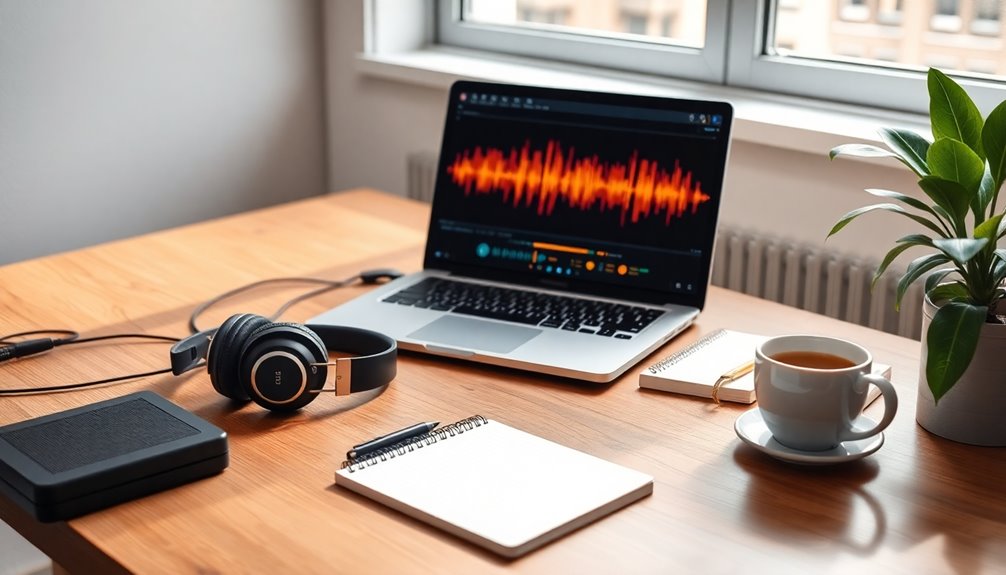
When it comes to effective interview transcription, having the right tools at your disposal can make a significant difference.
Start with a reliable audio player that offers hot-key functions, allowing you to pause, rewind, and play recordings seamlessly. Pair this with a word processor for drafting and editing your transcript.
Using high-quality headphones will help you focus on the audio, minimizing background noise. Consider implementing auto-correct shortcuts to speed up your typing, and don't forget to incorporate time codes for any unclear sections. Additionally, creating a organized environment can further enhance your focus and productivity during the transcription process.
These essential tools will enhance your transcription process, ensuring accuracy and efficiency. By utilizing these resources, you'll streamline your workflow and produce a polished transcript ready for review.
Formatting Your Transcript

A well-formatted transcript is essential for clarity and ease of understanding. Proper formatting not only makes it easier for readers to follow the conversation but also highlights key points.
Here are three important formatting tips you should follow:
- Speaker Labels: Use clear speaker labels (like MS for Michael Stowfield) to identify who's speaking. This helps avoid confusion during dialogue.
- Date and Location: Always include the date and location at the beginning. This provides context and can be helpful for future reference.
- Dialogue Flow: Format the dialogue with line breaks for each speaker's turn. This enhances readability and mirrors the natural flow of conversation.
Roles of Interview Participants

Understanding the roles of interview participants is key to conducting effective interviews. The interviewee is the person being questioned, providing insights and experiences. You should prepare thoughtful responses to the interviewer's questions, ensuring clarity and relevance.
On the other hand, the interviewer guides the conversation, asking questions and probing for deeper understanding. It's your job to craft questions that elicit detailed answers, creating a comfortable environment for discussion.
Power dynamics often favor the interviewer, so being aware of this can help in maintaining a balanced dialogue. Both participants must communicate effectively; your ability to listen and respond thoughtfully can make all the difference in achieving your interview goals.
Writing Interview Reports
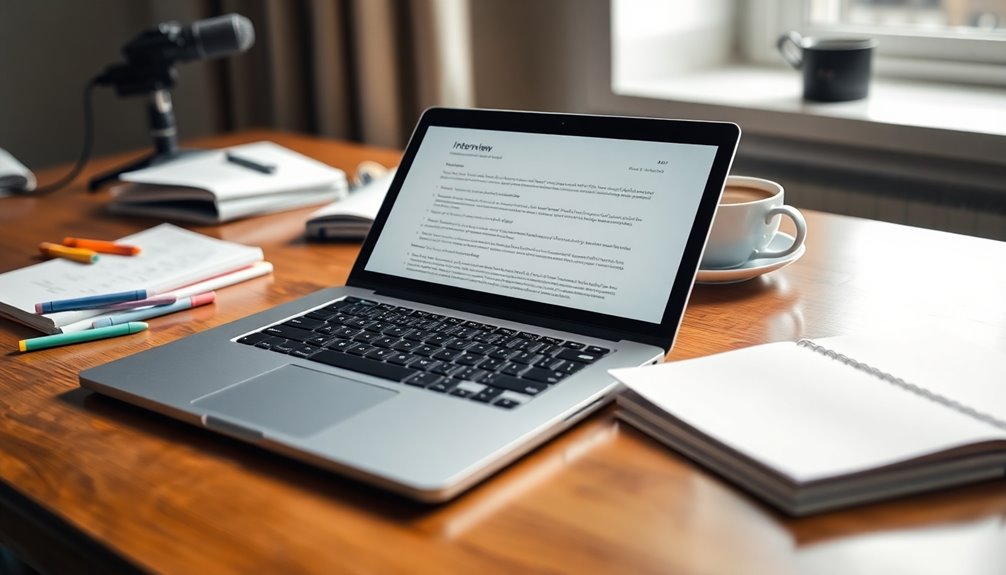
How do you effectively document the insights gained from an interview? Writing an interview report is key to preserving important information and observations.
Start by organizing your findings into a clear structure. Here are three essential components to include:
- Introduction: Briefly explain the purpose of the interview and its context.
- Main Body: Summarize the responses, incorporate direct quotes, and highlight critical observations. This section should reflect the flow of the conversation and emphasize key themes.
- Conclusion: Wrap up with a summary of insights gained and any actionable recommendations.
Utilizing Interview Guides
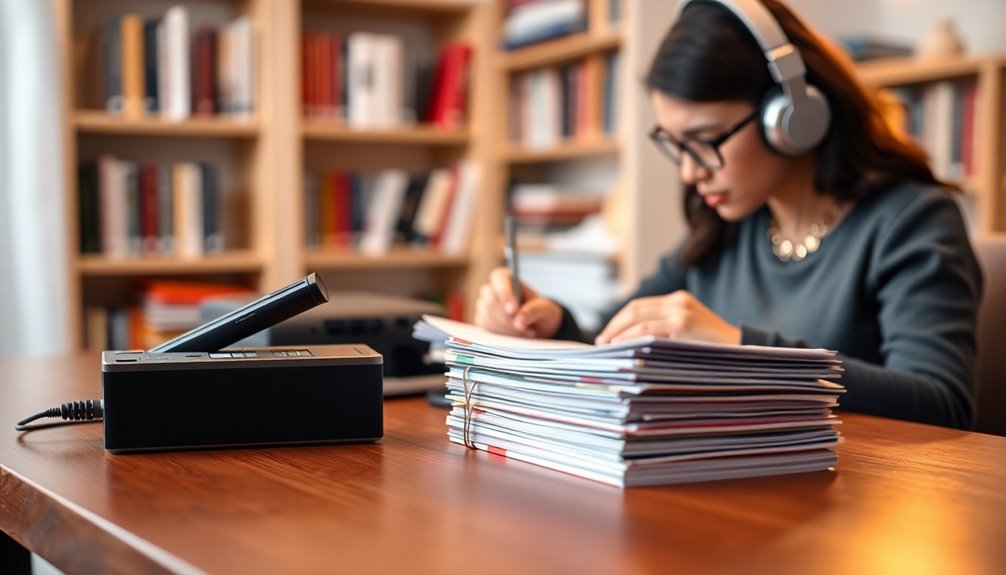
After you've documented your interview insights, utilizing interview guides can enhance the overall effectiveness of your interviews. These guides provide a structured framework, ensuring you cover all essential topics and questions.
By preparing a list of targeted questions, you can maintain focus and keep the conversation flowing smoothly. This not only helps you gather extensive information but also reduces the risk of bias in your approach.
Customizing the guide for each interview allows you to adapt to different candidates or themes, making your process more effective. Additionally, interview guides promote consistency and clarity, helping you draw useful comparisons between candidates. Incorporating feedback loops during the interview process can enhance customer engagement and improve your overall interviewing technique.
Frequently Asked Questions
How Do I Handle Multiple Speakers in a Transcript?
When handling multiple speakers in a transcript, you'll want to clearly differentiate between each participant.
Use abbreviations for their names, like "MS" for Michael Stowfield, to keep it organized.
Make sure you format the dialogue to reflect the flow of conversation, placing each speaker's comments on a new line.
You might also note any interruptions or overlapping dialogue to capture the dynamics accurately, ensuring your transcript remains clear and easy to follow.
What Should I Do if the Audio Quality Is Poor?
If you're dealing with poor audio quality, it's like trying to read a book in the dark—frustrating!
First, listen to the recording multiple times to catch key points. Use noise-canceling headphones to filter out background sounds.
Consider audio-enhancement software to improve clarity. If you still struggle, ask the participants for any notes they might've or clarify their statements through follow-up questions.
Prioritize accurate representation despite the challenges!
Can I Use Transcription Software for Interviews?
Absolutely, you can use transcription software for interviews!
These tools can save you time and effort by automatically converting audio into text. They often come with features like speaker identification and time-stamping, which help organize the content.
Just make sure to review the output for accuracy, as software can misinterpret words, especially in noisy environments.
How Long Does It Typically Take to Transcribe an Interview?
Typically, it takes about four to six hours to transcribe an hour-long interview, depending on your typing speed and familiarity with the content.
If you're using transcription software, it might reduce the time considerably.
You'll want to factor in additional time for proofreading and formatting the transcript for clarity.
What Are the Ethical Considerations in Interview Transcription?
Did you know that 80% of interviewees expect their conversations to remain confidential?
When you're transcribing interviews, ethical considerations are essential. Always seek consent from participants before sharing transcripts, ensuring their privacy is protected.
Be mindful of how you represent their words; accuracy matters. Avoid misinterpretation and bias, as these can distort the interview's intent.
Maintaining confidentiality and integrity fosters trust, encouraging open dialogue in future interactions.
Conclusion
Mastering interview transcription might seem intimidating, but you've got the tools and techniques to make it manageable. Don't let the fear of missing details hold you back; with practice, you'll find the rhythm that works for you. Imagine the confidence you'll feel as you capture every nuance of a conversation, empowering your decisions and insights. Embrace this skill, and you'll not only enhance your professional capabilities but also guarantee that every voice is heard and valued.









